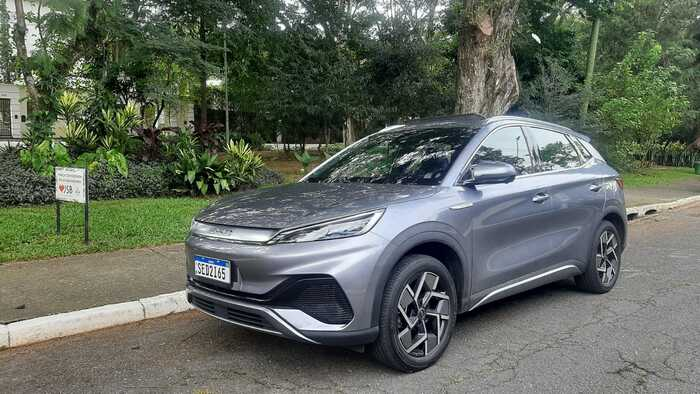The electric vehicle (EV) industry is buzzing with innovation, and one company at the forefront of this revolution is BYD. The Chinese automotive giant’s Blade Battery is making waves for its groundbreaking advancements in EV safety and performance. With the demand for sustainable and efficient transportation options rising, BYD’s Blade Battery is setting a new standard by offering enhanced safety features and superior energy efficiency. In this article, we’ll delve into what makes the Blade Battery a game-changer in the EV landscape and explore its impact on the future of electric mobility.
Unpacking the Blade Battery: A New Era in Battery Technology
What Sets the Blade Battery Apart?
BYD’s Blade Battery distinguishes itself through its unique design and enhanced safety features. Unlike traditional lithium-ion batteries, the Blade Battery uses a lithium iron phosphate (LFP) chemistry, which is known for its stability and safety. Here are some key features that make the Blade Battery a standout:
- Innovative Design: The Blade Battery’s thin, long cell structure allows for better heat dissipation and reduces the risk of thermal runaway, making it one of the safest battery options on the market.
- Increased Safety: In nail penetration tests, a critical measure of battery safety, the Blade Battery showed no signs of smoke or fire, a common issue with conventional batteries.
- Extended Lifespan: The Blade Battery boasts a lifespan of over 1.2 million kilometers, or approximately 800,000 miles, ensuring longevity and reducing the need for frequent battery replacements.
Performance and Efficiency: A Leap Forward
The Blade Battery doesn’t just excel in safety; it also enhances the overall performance and efficiency of electric vehicles. Here’s how:
- Higher Energy Density: Despite its safer chemistry, the Blade Battery maintains a competitive energy density, which translates to longer driving ranges for EVs.
- Cost-Effectiveness: The use of LFP chemistry, which doesn’t rely on expensive cobalt, makes the Blade Battery a more affordable option for manufacturers and, ultimately, consumers.
- Fast Charging Capabilities: With advanced charging technology, the Blade Battery can achieve a full charge in significantly less time compared to traditional batteries, improving convenience for EV owners.
How Blade Battery Technology is Impacting the EV Market
Safety First: A New Benchmark
The Blade Battery’s remarkable safety features are reshaping consumer expectations and industry standards. As reported by Electrek, the Blade Battery’s ability to withstand extreme conditions without catching fire has set a new benchmark for battery safety. This development is crucial as safety concerns remain a significant barrier to EV adoption.
Industry Adoption and Expansion
Major automakers are taking notice of BYD’s innovation. According to InsideEVs, BYD has already partnered with several international car manufacturers to integrate the Blade Battery into their upcoming EV models. This collaboration is likely to accelerate the global shift towards safer and more efficient electric vehicles.
Sustainability and Environmental Impact
The Blade Battery’s use of LFP chemistry not only enhances safety and reduces costs but also supports sustainability goals. As noted by Bloomberg Green, the absence of cobalt and nickel in the Blade Battery’s composition minimizes environmental impact and ethical concerns associated with mining these materials.
Practical Value: What Consumers Need to Know
Charging Your Blade Battery-Equipped EV
If you’re considering an EV with a Blade Battery, here are some tips for optimal charging:
- Use Compatible Chargers: Ensure your charging station is compatible with LFP battery technology for efficient energy transfer.
- Avoid Extreme Temperatures: While the Blade Battery is robust, it’s best to charge and store your vehicle in moderate temperatures to preserve battery health.
- Regular Maintenance: Periodic checks by certified technicians can help maintain optimal battery performance.
Where to Buy and What to Compare
When looking to purchase an EV equipped with BYD’s Blade Battery, consider the following:
- Automotive Brands: Currently, BYD models such as the Han EV and Tang EV feature the Blade Battery, with more brands expected to follow.
- Comparative Analysis: Compare the Blade Battery’s performance and cost against other battery technologies like Tesla’s 4680 cells or Volkswagen’s MEB platform.
Recommendations for Potential Buyers
- Prioritize Safety: If safety is a top concern, the Blade Battery-equipped models offer peace of mind with their superior safety features.
- Consider Long-Term Costs: Although the initial cost may vary, the Blade Battery’s longevity and reduced maintenance can lead to significant savings over time.
Conclusion: The Future of EVs with Blade Battery Technology
BYD’s Blade Battery is not just a technological marvel; it’s a catalyst for change in the EV industry. By prioritizing safety, performance, and sustainability, the Blade Battery is poised to redefine what consumers expect from electric vehicles. As more automakers adopt this cutting-edge technology, we can anticipate a future where EVs are safer, more efficient, and environmentally friendly.
Are you ready to embrace the future of electric mobility? Consider an EV equipped with BYD’s Blade Battery and join the revolution that’s driving us towards a cleaner, safer, and more sustainable world. What advancements do you foresee in battery technology over the next decade? Share your thoughts and join the conversation on the future of electric vehicles.

